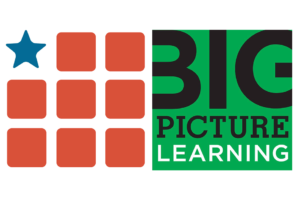How 3 States Are Eliminating Barriers to Dual Enrollment for Students with Disabilities
Key Points
-
Federal law is only a floor, not a ceiling.
-
Nothing prevents a state or a school from going above and beyond the minimum requirements to ensure students with disabilities succeed in dual enrollment.

Every year, more and more high school students jumpstart their college careers through a pathway of dual enrollment courses. In many states, dual and concurrent enrollment courses count for both high school and college credit. They may also be free to high school students and may be transferable to other higher ed institutions.
While states have made strides in bridging equity gaps in dual and concurrent enrollment programs, one serious exception remains: students with disabilities.
The College in High School Alliance recently partnered with KnowledgeWorks and Think Inclusion to release a state policy framework with over 30 recommendations to help states better support these students. Through this research, we identified the greatest barrier students with disabilities face in dual enrollment. Many schools mistakenly inform students that the services and accommodations provided for in their Individualized Education Plans (IEPs) no longer apply in dual enrollment courses.
In an effort to ensure rigor and quality, most states and many accreditation models have declared that colleges–not high schools–are responsible for ensuring that course content and outcomes are equal to other credit-bearing courses. But this approach generates the misperception that the federal laws protecting secondary students with disabilities don’t apply in dual enrollment.
While states have made strides in bridging equity gaps in dual and concurrent enrollment programs, one serious exception remains: students with disabilities.
Karla Phillips-Krivickas
Three States Providing Clarity to Schools
However, even if it were true that IEPs don’t apply in dual enrollment courses, federal law is just a floor, not a ceiling. Nothing prevents a state or a school from going above and beyond the minimum requirements to ensure students with disabilities succeed in dual enrollment. Some states offer replicable examples of how to address this issue and provide much-needed clarity to schools and students.
- Illinois recently passed HB 3950, boldly declaring that the partnership agreements between the community colleges and high schools must now ensure that the services and supports students with disabilities receive in high school are honored in dual credit courses. (While this provision is itself bold, the bill is even more expansive.)
- Minnesota law offers, perhaps, the strongest example. The law clearly stipulates that, “If the student has an individualized education program that provides general education support and accommodations, the postsecondary institution must provide the support services as described in the student’s IEP and the postsecondary institution and the district shall negotiate an agreement on the rate to be charged for the services.”
- Rhode Island took a different approach. The dual enrollment statute directed the State Board of Education to develop, through rule, a statewide dual enrollment policy. The resulting regulations require that students with disabilities receive “the protections, services and accommodations as prescribed by federal and state law in accordance with the policies and procedures of the postsecondary institution in the case of dual enrollment or the secondary school in the case of concurrent enrollment.”
(Although Rhode Island differentiates the policy between the programs and services based on location, it is noteworthy that 80% of dual enrollment courses nationally are provided on high school campuses, according to National Alliance of Concurrent Enrollment Partnerships.)
Too many states get caught up in debates over governing authorities rather than focusing on the actual goal: how to best support students with disabilities to succeed in dual enrollment coursework. Yet Illinois, Minnesota, and Rhode Island demonstrate that states can go above and beyond federal law to prioritize students over the process.
Strong research demonstrates the positive effects of dual credit programs on post-high school outcomes, and there is no reason to believe that these benefits wouldn’t apply to students with disabilities as well. As colleges seek to reach state attainment goals, making intentional efforts to improve outcomes for students with disabilities should be a key strategy.
Karla Phillips-Krivickas is the founder of Inclusive Strategies and one of the nation’s foremost thought leaders on education policy and reform. She has decades of experience in state and federal policy, and currently serves as a Senior Advisor at KnowledgeWorks where she helps states build education systems that support student-centered learning. In all her work, Karla channels her professional and personal experiences to passionately advocate for all students, especially those with disabilities.
This post is part of our New Pathways campaign sponsored by ASA, Stand Together and the Walton Family Foundation.






Learners Ink
Thanks for your article.
After all, what a great site and informative posts.